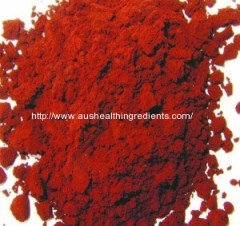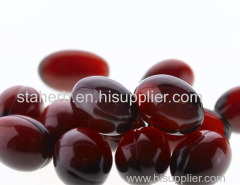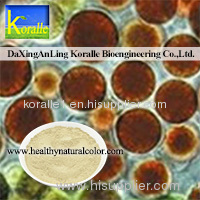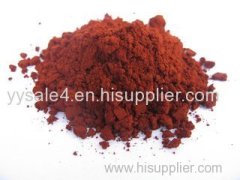
What is Natural Astaxanthin?
| Trade Term: | FOB |
|---|---|
| Payment Terms: | WU |
| Place of Origin: | Zhejiang |
Company Profile
| Location: | Xiamen, Fujian, China (Mainland) |
|---|---|
| Business Type: | Manufacturer, Trading Company |
| Main Products: | Plant Extract |
Product Detail
| Model No.: | Natural-Astaxanthin |
|---|---|
| Means of Transport: | Ocean, Air, Land |
| plant extracts: | herbal extracts |
Product Description
Product: Natural Astaxanthin
Appearance of Astaxanthin under microscope
Source: Extracted from Haematococcus Pluvialis
CAS No.: 472-61-7
Used part: Haematococcus cells
Chemical formula: C40H52O4
Molar mass: 596.84 g/mol
Appearance: red solid powder
Specification: Astaxanthin 1%, 1.5%, 2%, 2.5%, 3%, 3.5%, 5%, 6% UV/ HPLC
Product description: Astaxanthin is a powerful antioxidant. The free radical scavenging activity of astaxanthin protects lipids from peroxidation and reduces oxidative damage of LDL-cholesterol (thereby reducing arterial plaque formation), cells, cell membranes, mitochondrial membranes. Astaxanthin increases strength and endurance.
Astaxanthin is a red pigment occurring naturally in a wide variety of living organisms. Astaxanthin is a naturally occurring carotenoid that is closely related to beta-carotene and Lutein.
Because of its unique structure, astaxanthin provides a wide range of antioxidant benefits. Astaxanthin may play a key role in the protection of cell membranes against free radical attack. Although the word astaxanthin may not be commonly encountered in everyday speech, the pigment itself is found in many human foods, and you are quite likely to be consuming it in your diet already. Shrimp, salmon, crawfish, crabs and lobster, are tinted red by accumulated astaxanthin.
Astaxanthin is one of a group of natural pigments known as carotenoids. Commercial production of astaxanthin from the microalga Haematococcus pluvialis for its high astaxanthin content. Some other commercial ventures for natural astaxanthin production utilize fermentation of the pink yeast Xanthophyllomyces dendrorhous or extraction of the pigment from by-products of crustacea such as the Antarctic krill (Euphausia superba).
Astaxanthin seems to improve the immune system by increasing the number of antibody producing cells. Astaxanthin enhances antibody production by exerting actions on T-cells and T-helper cells. Astaxanthin is used to treat neurodegenerative conditions such as Alzheimer's and Parkinson?s disease.
Astaxanthin protects the eyes and skin from sun radiation damage by quenching singlet and triplet oxygen. Studies with rats show that astaxanthin reduces retinal injury.
Studies have shown the anti-cancer effects of astaxanthin in rodents. The inhibitory effect of astaxanthin on cancer is stronger han that of beta-carotene.




